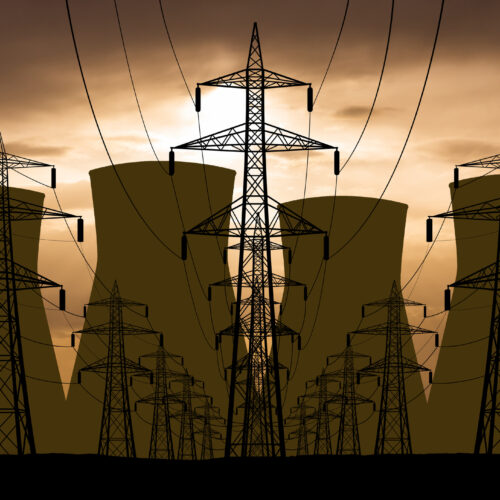Trump signs executive orders meant to resurrect US nuclear power

Plan calls for three new reactors to reach criticality in about a year.
Currently, there are no nuclear power plants scheduled for construction in the US. Everybody with plans to build one hasn’t had a reactor design approved, while nobody is planning to use any of the approved designs. This follows a period in which only three new reactors have entered service since 1990. Despite its extremely low carbon footprint, nuclear power appears to be dead in the water.
On Friday, the Trump administration issued a series of executive orders intended to revive the US nuclear industry. These include plans to streamline the reactor approval process and boost the construction of experimental reactors by the Department of Energy. But they also contain language that’s inconsistent with other administration priorities and fundamentally misunderstands the use of nuclear power. Plus, some timelines might be, shall we say, unrealistic: three new experimental reactors reaching criticality in just over a year.
Slow nukes
The heyday of nuclear plant construction in the US was in the 1970s and ’80s. But the 1979 partial meltdown at the Three Mile Island plant soured public sentiment toward nuclear power. This also came at a time when nuclear plants typically generated only half of their rated capacity, making them an expensive long-term bet. As a result, plans for many plants, including some that were partially constructed, were canceled.
In this century, only four new reactors on existing plant sites have started construction, and two of those have since been cancelled due to delays and spiraling costs. The two reactors that have entered service also suffered considerable delays and cost overruns.
While safety regulations are often blamed for the construction costs, researchers who studied construction records found that many delays simply arose from workers being idled while they awaited equipment or the completion of other work on the site. This may indicate that the lack of a well-developed supply chain for reactor parts is a significant contributor. And the last major changes in safety regulations came in response to the Fukushima meltdown and explosions, which identified key vulnerabilities in traditional designs.
A large number of startups have proposed designs that should be far less prone to failure. Many of these are SMRs, or small modular reactors, which promise economies of scale by building the reactor at a central facility and then shipping it to the site of installation. But, as of yet, only a single reactor of this type has been approved in the US, and the only planned installation of that design was canceled as the projected cost of its electricity became uncompetitive.
That environment makes investing in nuclear power extremely risky on its own. However, we’re also at a time when the prices of natural gas, wind, and especially solar are incredibly low, making it challenging to justify the large up-front costs of nuclear power, along with the long lead time before it starts generating returns on those costs.
A new hope?
That’s the situation the Trump administration hopes to change, though you can question the sincerity of that effort. To start, the executive orders were issued on the Friday before a holiday weekend, typically the time reserved for news that you hope nobody pays attention to. One of the announcements also refers to nuclear power as dispatchable (meaning it can be ramped up and down quickly), which it most certainly isn’t. Finally, it touts nuclear power as avoiding the risks associated with other forms of power, “such as pollution with potentially deleterious health effects.” Elsewhere, however, the administration is eliminating pollution regulations and promoting the use of high-pollution fuels, such as coal.
Overall, the actions proposed in the new executive orders range from the fanciful to the potentially reasonable. For example, the “Reinvigorating the Nuclear Industrial Base” order calls for the development of the capacity to reprocess spent nuclear fuel to obtain useful fuel from it, a process that’s extremely expensive compared to simply mining new fuel and would only make nuclear power less economically viable. It also calls for recommendations regarding permanent storage of any remaining waste, an issue that has remained unresolved for decades.
Mixed in with that are more sensible recommendations about ensuring the capacity to enrich isotopes to the purities needed to fuel power plants.
The order also calls for the Department of Energy (DOE) to provide financial support for the industry to boost construction of new plants, something the agency already does through a loan guarantee program. Even though those guarantees have not resulted in new construction plans in over a decade, the EO calls for the effort to result in “10 new large reactors with complete designs under construction by 2030.” While the Biden administration had approved payments to keep nuclear plants open, Trump is calling for funding to be used to reopen some plants that had been unable to operate economically—something that has not been done in the US previously. It also calls for money to go to restart construction at sites where reactors were canceled, although only two of those are less than decades old.
Similar unrealistic time scales are present in the “Deploying Advanced Nuclear Reactor Technologies” order. This is intended to encourage some of the proposed designs for SMRs and inherently safe reactors that are currently on the drawing board. It directs the Army to install one of these at a military base that will be operating within the next three years. And it directs the secretary of energy to contract with companies to build three test reactors that will sustain a nuclear reaction by July 4, 2026.
The accelerated schedule is expected to come from enabling the secretary of energy to simply ignore any aspect of the environmental review that the companies building the reactor complain about: “The Secretary shall, consistent with applicable law, use all available authorities to eliminate or expedite the Department’s environmental reviews for authorizations, permits, approvals, leases, and any other activity requested by an applicant or potential applicant.”
Regulatory reform
The other big executive order targets the Nuclear Regulatory Commission (NRC), which approves license designs. The order blames this on how the NRC is structured: “The NRC charges applicants by the hour to process license applications, with prolonged timelines that maximize fees while throttling nuclear power development.”
It also criticizes the commission’s regulations as being based on the idea that there is no safe level of exposure to radiation, though it provides no evidence that the idea is wrong. This is said to result in regulations that attempt to lower exposures below those caused by a natural environment.
The order attempts to accelerate the approval process enough to ensure that the US goes from 100 GW of generating capacity to 400 GW by 2050. This is largely done by setting hard time limits on the approval process through consultations with DOGE, including a limit of 18 months for approval of new nuclear plants. It also calls for the adoption of “science-based radiation limits,” claiming that flaws with existing limits had been discussed earlier—even though the earlier discussion made no mention of scientific flaws.
In keeping with plans for mass production of modular reactors, the order also calls for a single certification process for these designs, focusing solely on site differences once the general reactor design is accepted as safe.
Overall, there are some reasonable ideas scattered throughout the executive orders (though whether their implementation ends up being reasonable is questionable, especially given DOGE’s involvement). But the majority of them are based on the idea that regulation is the primary reason for nuclear energy’s atrophy in the US.
The reality is that an underdeveloped supply chain and unfavorable economics are far larger factors. It’s difficult to justify investing in a plant that might take a decade to start selling power when the up-front costs of solar are far smaller and can start producing power while still under construction. The most likely way to see a nuclear resurgence in the US is for the government to pay for the plants itself. There’s a small bit of that here, in the call for the DOE to fund the construction of experimental reactors at third-party sites. But it’s not enough to significantly shift the trajectory of US nuclear power.
John is Ars Technica’s science editor. He has a Bachelor of Arts in Biochemistry from Columbia University, and a Ph.D. in Molecular and Cell Biology from the University of California, Berkeley. When physically separated from his keyboard, he tends to seek out a bicycle, or a scenic location for communing with his hiking boots.













